Apple’s Pages word processor is a big, rich app with hundreds of features tucked away in nooks and crannies, making Michael E. Cohen’s comprehensive book an essential resource for newbies and experts alike. Whether you prefer to dive into the details or get quick help with a particular feature, this book has got you covered.
Note: This edition of the book focuses primarily on the Mac and iPad versions of Pages, although it does cover the iPhone and web versions of the app to a limited extent.
In this thoroughly revised fourth edition, Michael expands his already extensive guide, detailing all the changes Apple has made to Pages since the last version of the book was released, including support for macOS 14 Sonoma and iPadOS 17. Among many other new and updated features, learn about using Mail Merge, adding and working with 3D images, and collaborating with other users on a document. You’ll also learn how to find features that have been moved or renamed.
With Michael’s help, you can navigate Pages like a pro. You’ll also learn how to:
- Find all the tools you need, whether on a Mac or an iPad
- Do everyday word processing, including working with fonts, tabs, indents, rulers, search and replace, spell checking, and more
- Format longer, more complex documents, with customized headers, footers, page numbers, tables of content, footnotes, and section breaks
- Manage styles, including paragraph styles, character styles, list styles, and object styles
- Create your own templates, complete with layout objects
- Master the many multi-touch gestures in iPadOS that give you pinpoint control over page elements
- Include complex tables and charts and make them look exactly the way you want
- Customize layout and manipulate graphics like a pro
- Collaborate with others in real time using iCloud
- Share your documents across devices, using Mac, iPad, iPhone, or almost any web browser
Michael E. Cohen has taught English composition, worked as a programmer for NASA’s Deep Space Network, helped develop the first commercial ebooks at the Voyager Company, and co-founded a major university’s Humanities computing center. He has authored several books, including Apple Interface Mysteries, Take Control of PDFpen, Take Control of Pages, and Take Control of TextExpander.
What’s New in The Fourth Edition
This fourth edition of Take Control of Pages welcomes back the Last Big Feature that Pages lost when it was completely revamped in 2013: Mail Merge, described in (what else?) “Use Mail Merge.”
Apple has also given Pages the capability to include 3D objects in a document. You can find out about them in “Use 3D Objects.”
Aside from those additions, Apple has tinkered with a lot of things since the last edition of this book. Many of them have been additions and refinements to how you collaborate with Pages: if you collaborate with others, re-read “Be a Collaborator.”
Some features may seem to have vanished, but have, in fact, been renamed. For example, where once you might have used a feature called Instant Alpha to remove an image’s background, you now use the Remove Background checkbox (described in “Remove Image Background”).
Among the renamed features are those with master in their names. In many cases, the word layout replaces it: “master objects” are now “layout objects,” for example—see “Use Placeholders and Layout Objects.” (Note, however that what once were called “master pages” are now called “page templates,” as described, for instance, in “Use Placeholders and Template Pages”). And, on both iPad and Mac, there are no more Preferences: they are now called Settings.
Apple has also moved commands around: these days, the Export commands on the iPad’s More toolbar menu can be found on the menu you get when you tap the document’s name on the toolbar. Other useful items have moved to that menu as well, or have been moved to the toolbar’s View Options menu.
As a result, the majority of screenshots in this edition are new, and very few sections of the book remain completely untouched from the previous edition. See the following topic, “A Note on the Transient Nature of Software,” for more tips on how to handle the continually evolving Pages apps.
Posted by Joe Kissell on November 7, 2023
Michael Cohen joined host Chuck Joiner on MacVoices to talk about Take Control of Pages, Fourth Edition.
In part one, Michael discusses some of the newest Pages features.
In part two, Michael talks about iCloud storage and collaboration, page layout, and more.
Posted by Michael E. Cohen on June 13, 2017
Apple has released new versions of its Pages apps, which is good news for everyone except me and my publisher, because we now have to find time to revise the just-recently revised Second Edition and put an update into production. But it’s worth doing, because a lot of good stuff got added to Pages:
Remember linked text boxes? After having gone missing with the release of Pages 5.0, this powerful feature is finally back, and it is better than ever. See Add linked text boxes in Pages.
When you use comments in your documents as you collaborate with others, you’ll find you can now carry on comment conversations by using the new comment reply feature, as described in Add and reply to comments in iWork.
Apple has vastly expanded the library of shapes you can add to documents, including many shapes, such as the map of Europe, that can be broken apart into their constituent shapes. Get started with shapes provides details.
The Pages for Mac preferences have a new pane, Auto-Correction, in which you can set up text replacements, itemize words that you want spelling correction to ignore, and more. The support article Set up auto-correction and text replacement for Pages, Numbers, or Keynote spells it out for you.
If you use Pages to create EPUBs, you may be pleased to learn you now can export fixed layout ebooks as well as the usual flowable kind. Create ePub files in Pages, though still mis-capitalizing EPUB, tells you how it works.
For more details, see the update articles for Pages on the Mac, iOS, and iCloud.
Posted by Michael E. Cohen on May 25, 2017
A few days before the new edition of my book was published, Chuck Joiner of MacVoices and I sat down for our usual new book release tête-à-tête. As is customary, Chuck asked a series of questions about what was new in the book and the apps it covered, and, as is also customary, I tried to answer them as clearly as I could while also looking for opportunities to make Chuck crack up on camera. We both succeeded in meeting our respective goals.
Posted by Michael E. Cohen on October 21, 2015
In the previous versions of Pages for iCloud, if you attempted to edit a Pages document that had tracked changes, Pages offered you two options: either accept all the tracked changes, or create a duplicate of the document with all tracked changes accepted. Now that Pages for iCloud is no longer in beta, you no longer have those options. Instead, you can open a document with tracked changes and view the change tracking — however, you cannot edit the document; neither can you accept the changes, nor create a duplicate with the changes accepted. So, if your workflow relies upon the ability to open and edit a change-tracked document in your browser (after accepting changes), be warned: change-tracked documents in Pages for iCloud are now view-only on that platform (though, of course, you can still edit them in Pages on iOS and Mac).
Posted by Michael E. Cohen on
As Agen Schmitz noted in his TidBITS Watchlist article, “Pages 5.6, Numbers 3.6, and Keynote 6.6 for Mac,” 16 October 2015, Pages has been updated on all three platforms: Mac, iOS, and iCloud. Among the many enhancements are support for Split View in El Capitan, support for Force Touch on Macs and 3D Touch on iOS, the ability to revert to previous versions on both iOS and iCloud, and the ability to open documents created with Pages ’08 and Pages ’06. Also of interest is the removal of the “Beta” status for the iCloud version of Pages. Apple supplies a list of enhancements on its “What’s new in Pages, Numbers, and Keynote” page.
Posted by Tonya Engst on April 27, 2015
Although this ebook covers many features, it doesn’t discuss scripting with Apple’s Automator and AppleScript tools to automate repetitive tasks that would be better carried out by a script than by you. To learn more about what’s possible and get started, check out the iWork & Automation portion of the Mac OS X Automation Web site.
If you’ve never thought about creating automation on a computer before, Automator or AppleScript may be a little much to jump into, though there are helpful introductory materials on the site. For even more help, check out Take Control of Automating Your Mac, by Joe Kissell, which introduces you to the automation mindset, helps you understand a variety of common automation techniques, and helps you take those first few baby steps toward Automator or AppleScript proficiency.





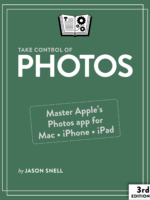
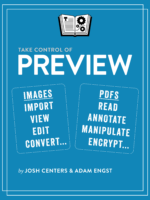
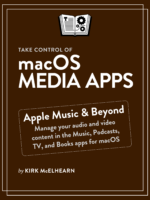
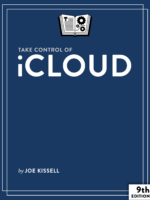
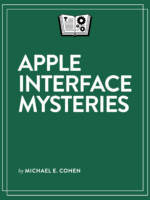
Reviews
There are no reviews yet.